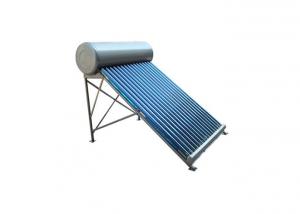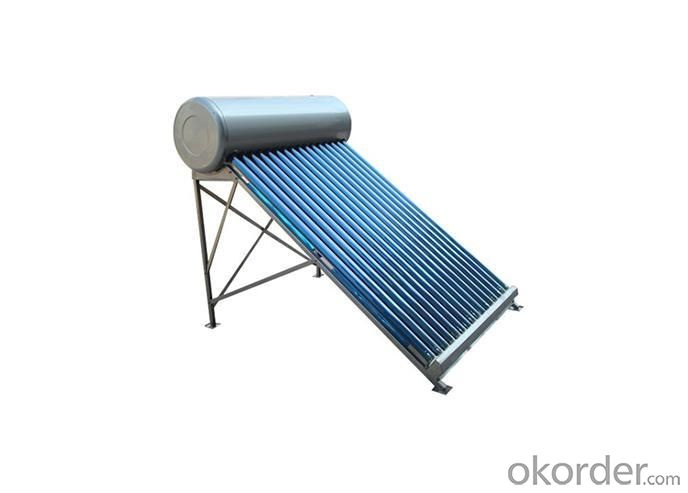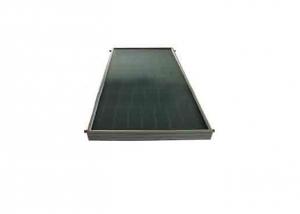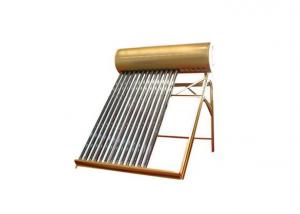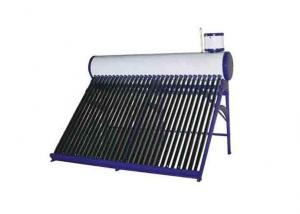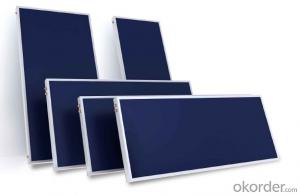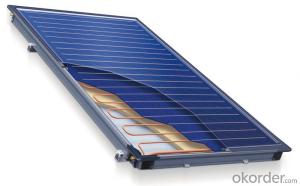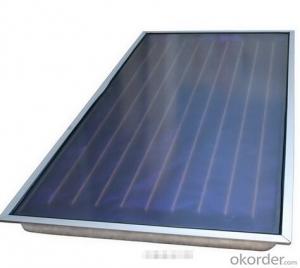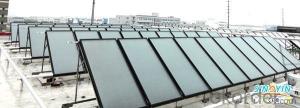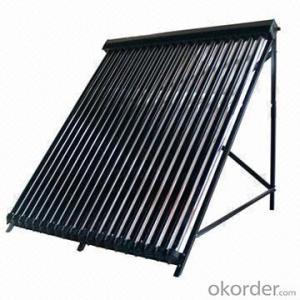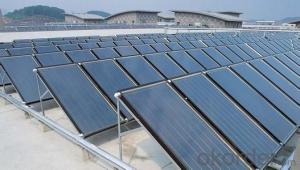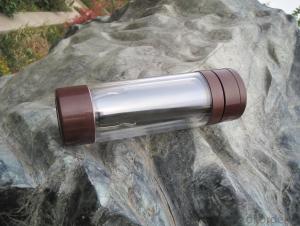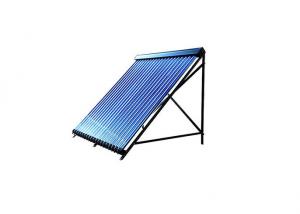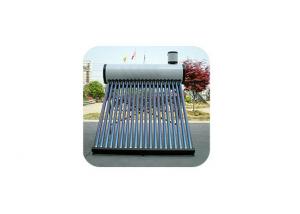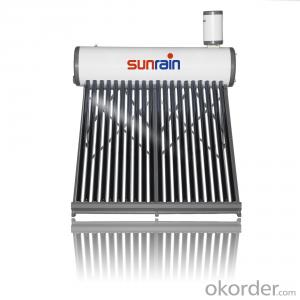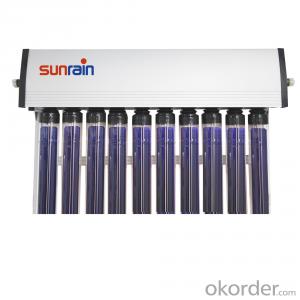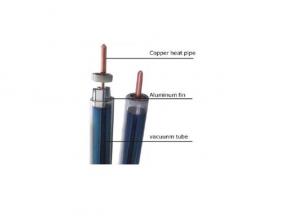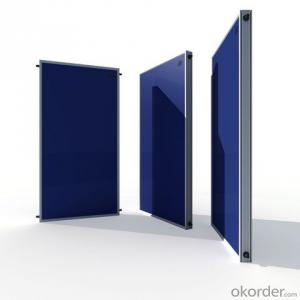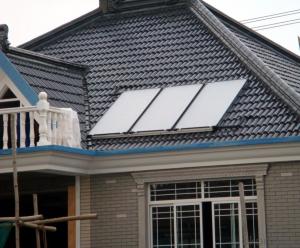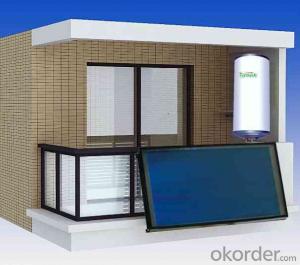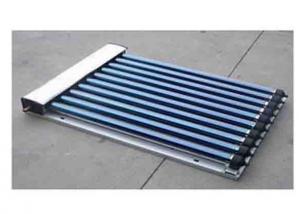Enduro Solar Water Heater
- Loading Port:
- China Main Port
- Payment Terms:
- TT or LC
- Min Order Qty:
- 5 Sets pc
- Supply Capability:
- 60,000 Sets per Year pc/month
OKorder Service Pledge
OKorder Financial Service
You Might Also Like
solar energy water heater,solar heating system,vacuum tube solar water heater:for household,school,enterprise,government,swimmin
Specifications:
1) Tank
a) Outer Tank material: galvanized armor plate.
b) Inner Tank material: imported SUS304-2B food grade stainless steel.
c) Water Tank Diameter: Φ410/420/460/470/480/500/520mm.
d) Insulating layer: 55-60mm polyurethane foame.
e) Tank Capacity: 90/110/150/180/200/210/240/300/350L.
2) Vacuum tube
a) Dimension: Φ47*1500mm/Φ58*1800mm.
b) Material: high boron silicon 3.3 glass.
c) Qty: 16/18/20/24/30/36 pcs.
d) Hail resistance diameter: Φ25mm
e) Tube coating: by AL-N-AL or ALN/AIN-SS/CU.
3) Bracket
a) Material: color armor plate.
b) Thickness: 1.5mm.
c) Obliquity: from 38o to 45o .
4) Certificates: ISO9001:2000,CCC,CE
- Q: Can solar collectors be used for heating casinos?
- Yes, solar collectors can certainly be used for heating casinos. Solar thermal technology can be employed to capture and convert sunlight into heat energy, which can then be used for various heating applications within the casino, such as space heating or water heating. This can help reduce reliance on fossil fuel-based heating systems and contribute to the overall sustainability and energy efficiency of the casino.
- Q: Can solar collectors be used for generating electricity on wearable devices?
- Yes, solar collectors can be used for generating electricity on wearable devices. With advancements in technology, solar panels can now be made smaller, flexible, and lightweight, making them suitable for integration into wearable devices such as smartwatches, fitness trackers, and even clothing. These solar collectors, also known as photovoltaic cells, can convert sunlight into electrical energy, which can then be used to power various functions of the wearable device. This can significantly extend the battery life of the device or even eliminate the need for traditional battery charging altogether. Additionally, the use of solar collectors on wearable devices aligns with the growing trend of sustainable and eco-friendly technology, as it reduces dependence on non-renewable energy sources and minimizes environmental impact. However, it is important to note that the efficiency of solar collectors on wearable devices can vary depending on factors such as the size of the solar panel, the intensity and duration of sunlight exposure, and the power requirements of the device.
- Q: Can solar collectors be used for heating livestock water?
- Yes, solar collectors can be used for heating livestock water. Solar water heaters can be installed to provide a cost-effective and environmentally friendly solution for heating water used for livestock. These collectors use solar energy to heat the water, which can then be distributed to the livestock for their drinking or bathing needs.
- Q: Can solar collectors be used in combination with radiant floor heating systems?
- Yes, solar collectors can be used in combination with radiant floor heating systems. In fact, this combination is quite effective in providing sustainable and efficient heating solutions for buildings. Solar collectors, such as solar thermal panels or evacuated tube collectors, use the sun's energy to heat a fluid, usually water or a mixture of water and antifreeze. This heated fluid is then circulated through a system of pipes embedded in the floors, providing radiant heat to the space. The advantage of using solar collectors in combination with radiant floor heating is that it allows for renewable and clean energy to be used for space heating. By harnessing the power of the sun, the reliance on fossil fuels or electricity is reduced, resulting in lower energy costs and carbon emissions. Additionally, solar collectors can provide a significant portion of the heating needs, especially during the sunny seasons, further reducing the reliance on traditional heating systems. However, it is important to note that the effectiveness of this combination depends on various factors such as the climate, solar resource availability, and system design. In regions with limited solar exposure, the solar collectors may not be able to provide sufficient heat for the radiant floor system, necessitating the use of a backup heating source. Therefore, a thorough assessment of the specific conditions and requirements of the building is necessary to determine the feasibility and optimal design of the solar collector and radiant floor heating system combination.
- Q: Can solar collectors be used for heating oil and gas facilities?
- Yes, solar collectors can be used for heating oil and gas facilities. Solar thermal systems can be employed to heat water or other fluids that are used for various processes in oil and gas facilities, such as heating or steam generation. This can help reduce the reliance on traditional fossil fuel-based heating systems and contribute to the overall sustainability and energy efficiency of the facilities.
- Q: How do solar collectors affect land use?
- Solar collectors have a positive impact on land use as they provide a sustainable and efficient way to generate clean energy without requiring large areas of land. By utilizing rooftops, parking lots, and other existing structures, solar collectors minimize the need for additional land use, thus reducing environmental impact and preserving natural habitats. Furthermore, their installation on unused or underutilized land can also have the added benefit of revitalizing and repurposing such areas.
- Q: Can solar collectors be used for heating chapels?
- Yes, solar collectors can be used for heating chapels. Solar collectors can capture and convert sunlight into heat energy, which can then be used to provide heating in buildings, including chapels. This can be achieved through various methods such as radiant floor heating or forced-air systems, utilizing the heat generated by solar collectors to warm the chapel space.
- Q: Can solar collectors be used in healthcare facilities?
- Yes, solar collectors can be used in healthcare facilities. Solar collectors can help provide renewable and sustainable energy sources for heating, cooling, and electricity needs in healthcare facilities. This can not only reduce carbon emissions and lower operating costs but also contribute to a greener and more environmentally-friendly healthcare sector.
- Q: How does a solar collector work?
- A solar collector works by absorbing sunlight and converting it into usable heat or electricity. It consists of a series of panels or tubes that contain a fluid or material capable of absorbing solar energy. When sunlight hits the collector, the fluid or material absorbs the energy and heats up. This heat can then be used to heat water, buildings, or generate electricity through various mechanisms like heat exchangers or photovoltaic cells.
- Q: Can solar collectors be used in military installations?
- Yes, solar collectors can be used in military installations. They offer a reliable and sustainable source of energy, reducing dependence on fossil fuels and enhancing energy security. Solar collectors can power various applications in military bases, including lighting, heating, and cooling systems, as well as charging communication devices and operating equipment. Additionally, solar energy can be integrated into portable and tactical systems used by the military during field operations, providing a decentralized and renewable power source.
1. Manufacturer Overview
| Location | Zhejiang,China |
| Year Established | 2005 |
| Annual Output Value | US$2.5 Million - US$5 Million |
| Main Markets | North America South America Eastern Europe Southeast Asia Africa Oceania Mid East Eastern Asia Western Europe Central America Northern Europe Southern Europe Domestic Market |
| Company Certifications | ISO9001:2008;ISO14001:2004 |
2. Manufacturer Certificates
| a) Certification Name | |
| Range | |
| Reference | |
| Validity Period |
3. Manufacturer Capability
| a) Trade Capacity | |
| Nearest Port | Shanghai,Hangzhou |
| Export Percentage | 41% - 50% |
| No.of Employees in Trade Department | 6-10 People |
| Language Spoken: | English, Chinese |
| b) Factory Information | |
| Factory Size: | 5,000-10,000 square meters |
| No. of Production Lines | 5 |
| Contract Manufacturing | OEM Service Offered Design Service Offered Buyer Label Offered |
| Product Price Range | Average |
Send your message to us
Enduro Solar Water Heater
- Loading Port:
- China Main Port
- Payment Terms:
- TT or LC
- Min Order Qty:
- 5 Sets pc
- Supply Capability:
- 60,000 Sets per Year pc/month
OKorder Service Pledge
OKorder Financial Service
Similar products
Hot products
Hot Searches
Related keywords
